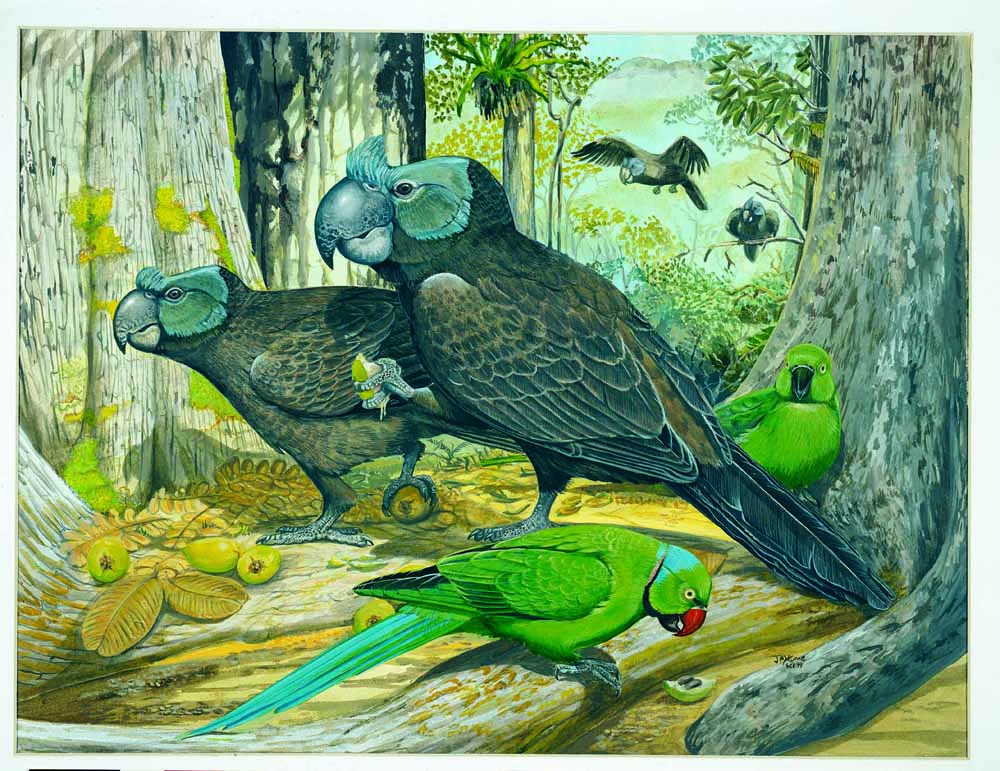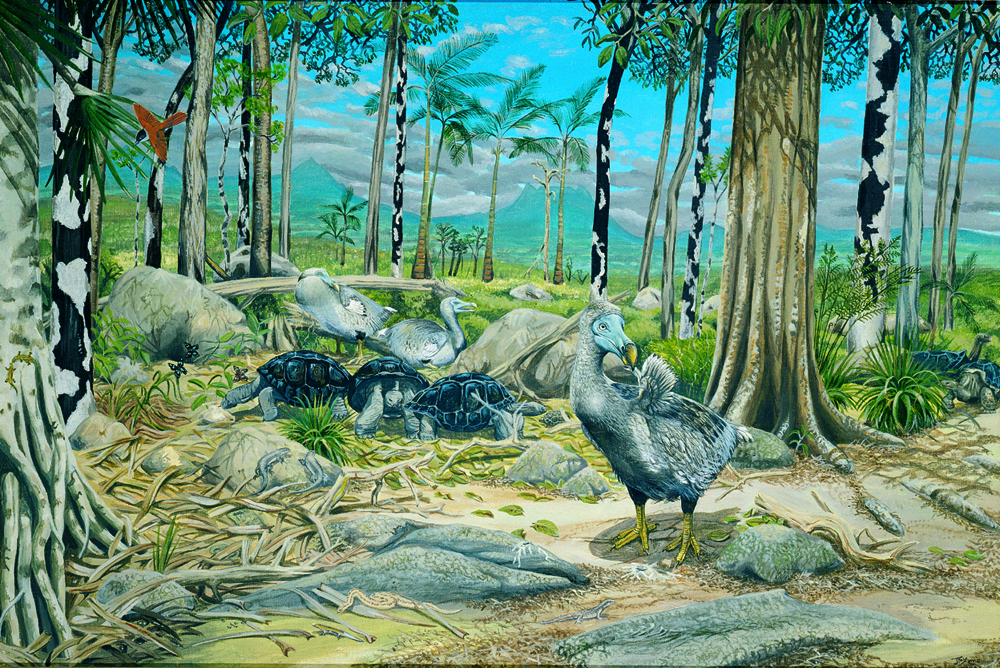Cranky Parrots? Weird Island Animals Described in Long-Lost Report

The dodo bird was not the only wacky animal inhabitant of the island of Mauritius: Bad-tempered parrots, wart-faced pigeons and several other now-extinct but noteworthy indigenous animals called this land home, new research suggests.
Historians had previously identified the animals that lived on the island before Dutch settlers arrived in the 17th century, but the details about these creatures had remained largely unknown.
"There are lots of reports of the original wildlife of Mauritius," said Julian Hume, an avian paleontologist and artist with London's Natural History Museum. "But almost all of them only say things like, 'This bird was easy to catch,' and 'It was good to eat.'"
Now, Hume's colleague Ria Winters has discovered a report on these animals written by a Dutch settler. A translation of the report, which Winters found in the Netherlands' National Archives in The Hague amid thousands of other yet-to-be translated documents, provides far more information about the behavior, ecology and physical appearance of the animals that once roamed the island, Hume told Live Science. [See Images of the Wacky Animals from Maritius Island]
Origin of the report
Mauritius, Réunion and Rodrigues make up the volcanic, isolated Mascarene Islands in the southwestern Indian Ocean. Though Arab traders and Portuguese sailors knew of the islands since the 14th and 16th centuries, respectively, neither group settled there, Hume said.
The Dutch claimed Mauritius for the Netherlands in 1598, and the Dutch East India Company (Vereenigde Oostindische Compagnie, or VOC) periodically used the island as a replenishment station for trading vessels traveling to the East Indies before establishing a permanent settlement in 1638. Twenty years later, they abandoned the island when they found a shorter path to the East Indies — and because of the rat populations that grew out of control on Mauritius since the Dutch arrived, according to Hume — only to return in 1664.
Get the world’s most fascinating discoveries delivered straight to your inbox.
Partly due to a lack of updates from the Dutch commander of the island, the VOC, in 1666, sent a soldier named Johannes Pretorius, and two other people, to Mauritius to check on the status of the settlement. When they arrived, they found the commander alive and well, and Pretorius took on the role of ziekentrooster, or comforter of the sick. (He would have otherwise become second in command). "The ziekentrooster had to be a person of authority and their job was limited to explanations of Christian doctrine and giving prayers. Only a pastor could give pardons and blessings," Hume said.
Three years later, in 1669, Pretorius authored the newly discovered report (likely for the VOC) while onboard a ship on its way to a larger VOC replacement station in Cape Peninsula, South Africa.
It's unclear why Pretorius wrote the report, Hume said. "His writing style suggests he was given the task of reporting on the island's suitability for long-term settlement," which includes what kinds of crops could be grown on the island and what wildlife exists to eat, he said.
An enlightening report
Although Pretorius' letter touches on the various ungulates — including cattle, goats, pigs and deer — that the Dutch brought to Mauritius, the most enlightening portions of the text describe the island's indigenous life.
For instance, based on other reports, Hume had previously argued that the island's raven parrot, which became extinct in 1675, had a blackish-brown body with a blue head and possibly a red beak. But based on Pretorius' descriptions and a re-examination of other accounts, Hume now thinks the bird was brightly colored and predominantly red. [6 Strange Species Discovered in Museums]
Pretorius' account also suggests the raven parrot was behaviorally flightless (it couldn't fly well, despite having the biology to do so) and that this flaw likely led to the creature's demise. The bird was tough and aggressive — or "very bad tempered," as Pretorius described it — and able to fend off introduced predators such as black rats and crab-eating macaques, but only for so long, Hume said.
The parrot's obstinate attitude also prevented it from being transported elsewhere. "When captive, it refuses to eat," Pretorius wrote. "It would prefer to die rather than to live in captivity."
Another interesting animal that was indigenous to the island was the Mauritius blue pigeon (Alectroenas nitidissima), which went extinct in 1837, Hume said. All other Alectroenas species are known to have warty faces, but contemporary artists depicted A. nitidissima as having smooth faces. "It seemed bizarre, but we thought that must have been the case," Hume said. But according to Pretorius, A. nitidissima was warty, just like its cousins.
In his report, Pretorius also describes the behavior and low intelligence of the extinct (circa 1700) flightless red rail, a bird that's sometimes confused with the dodo in old documents; the first-ever account of what Mauritius' giant tortoises ate (dead leaves and apples); how the introduced animals affected the island; how little the early Dutch settlers knew of the interior of Mauritius, which was inaccessible at the time because of densely packed vegetation; and the difficulties of growing nonpotato crops on the island, mostly due to voracious rats.
"The key thing about it was that it showed how difficult it was during those times just to survive on Mauritius," Hume said.
Hume and Winters recently published their analysis of Pretorius' report in the journal Historical Biology.
Follow Joseph Castro on Twitter. Follow us @livescience, Facebook & Google+. Original article on Live Science.




